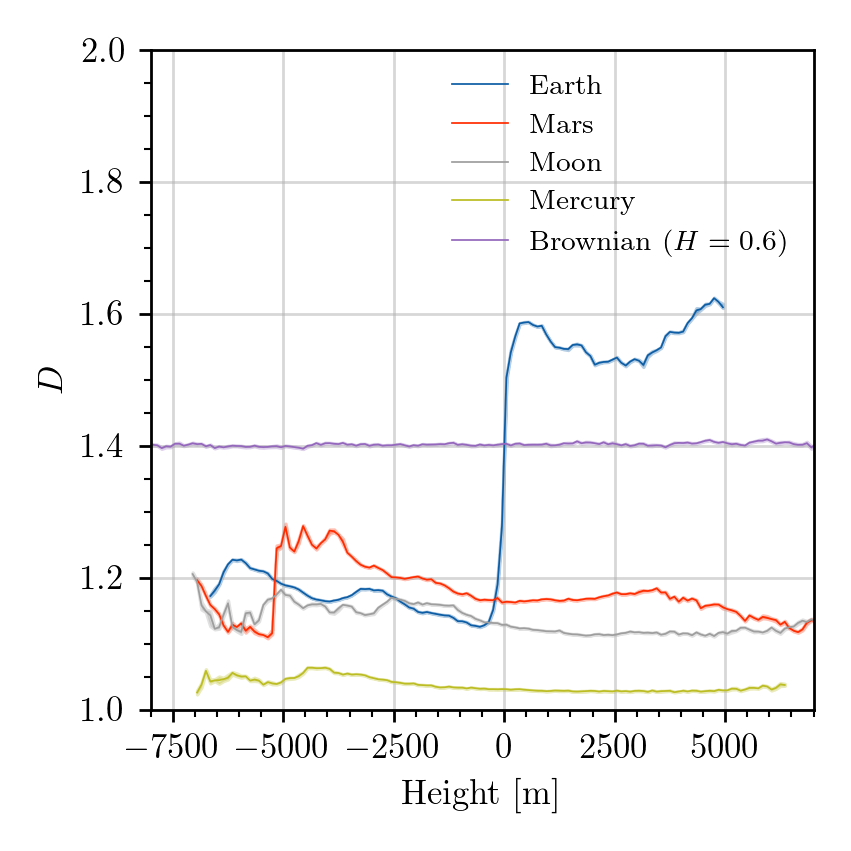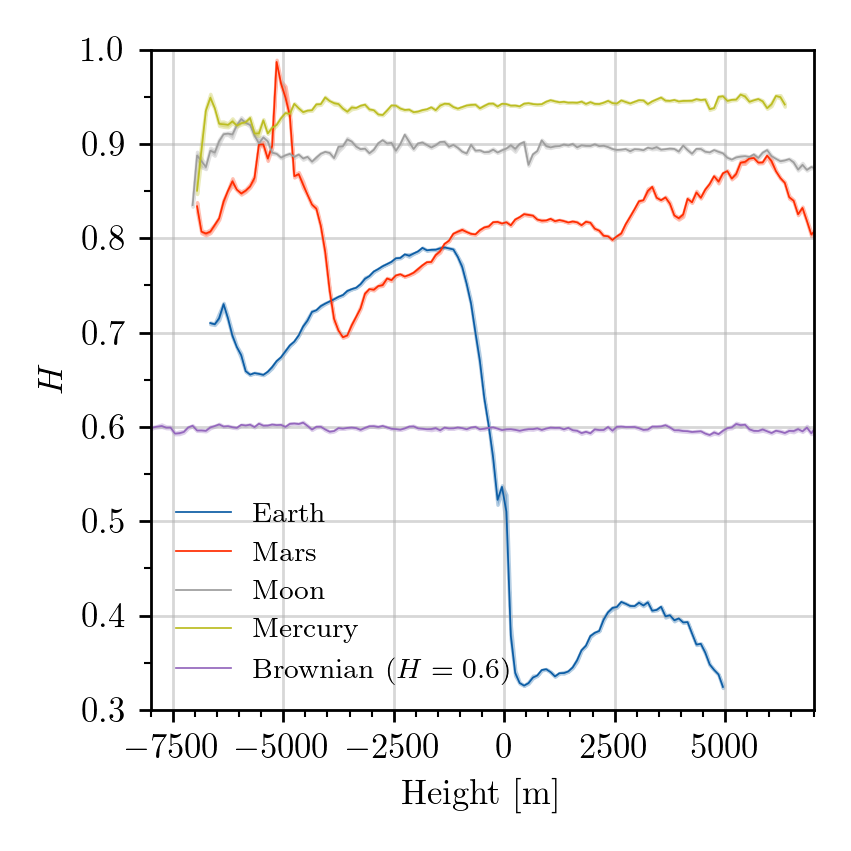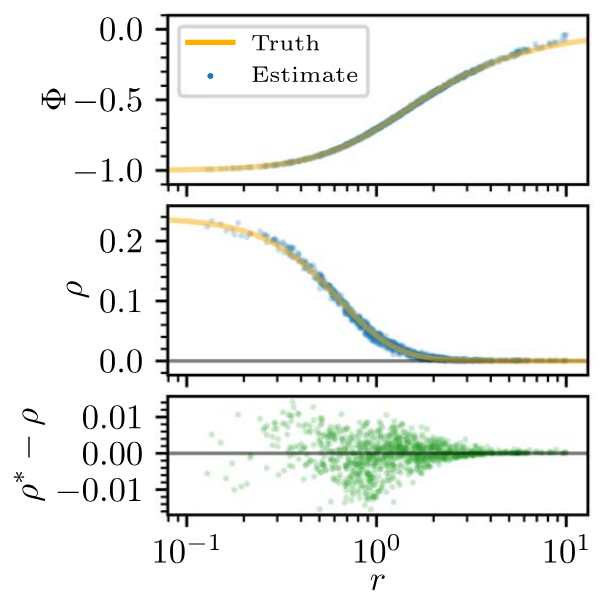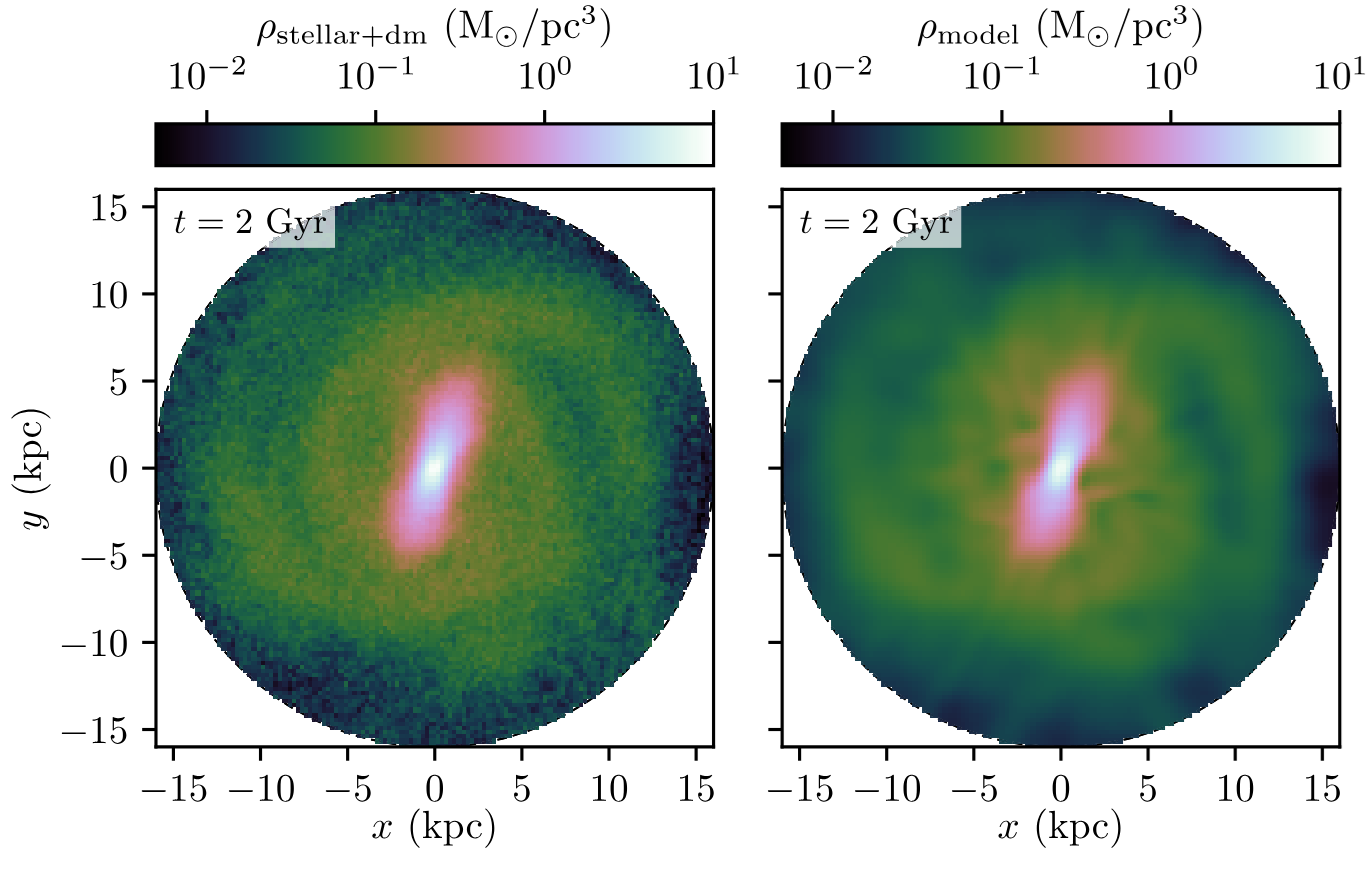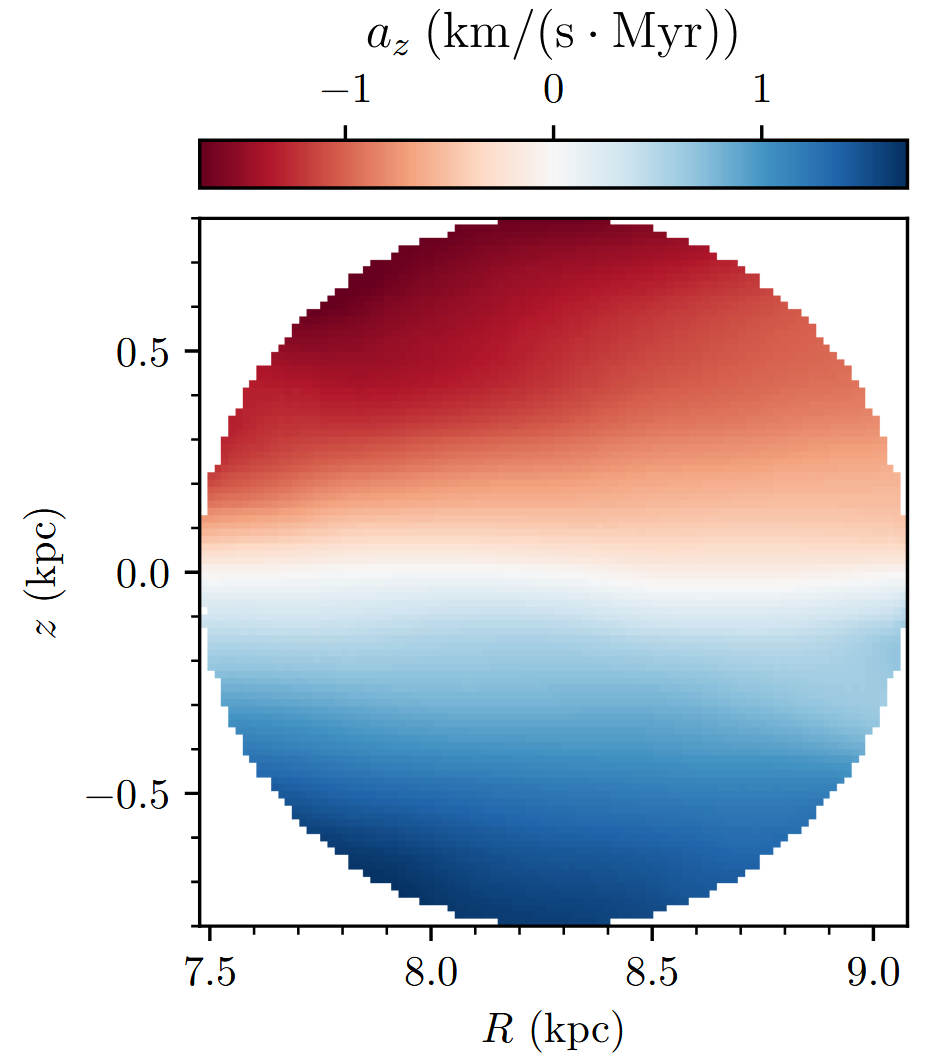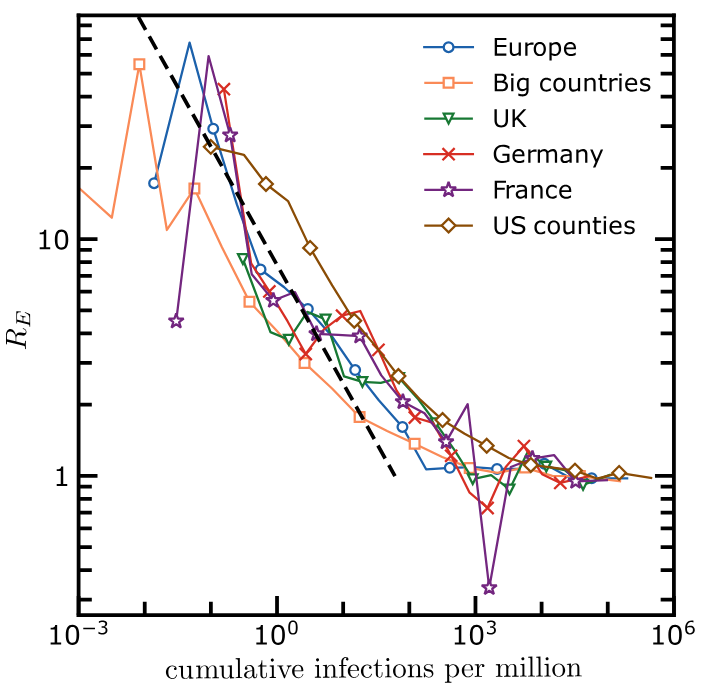Deep Potential
Recovering the gravitational potential from a snapshot of phase space
Supervisor: Gregory M. Green
One of the major goals of the field of Milky Way dynamics is to recover the gravitational potential field. Mapping the potential would allow us to determine the spatial distribution of matter - both baryonic and dark - throughout the Galaxy. This is usually done by using a set of tracers, typically a population of stars, and fitting a model that best explains the kinematics of the tracers. Because observations lack information about the accelerations of the stars, additional assumptions, such as stationarity, must be invoked in order to infer the gravitational potential from the stellar kinematics. Traditionally the models have been semi-analytic and restricted to certain classes of potentials.
I investigate a deep learning based approach termed “Deep Potential”, which aims to fit as general a potential as possible by representing the tracers with a normalizing flow, and the potential using a feed-forward neural network. The flexibility of the model is then limited by the size of the neural network. I am primarily interested in the application of this method to the Milky Way using Gaia Data Release 3 with radial velocities, and seeing how the fundamental assumptions of the method are challenged.
During my PhD, we verified the method on an N-body system featuring a prominent galactic bar, spiral arms, and other non-transiet features. In the process, we enhanced the method to relax the assumption about stationarity to work in rotating frames. We then applied the method on a sample of 5.6 million upper main sequence stars within 1 kpc from the Sun, and recovered the local matter density and acceleration profiles in the solar neigbhorhood, alongside with the local rotation speed.
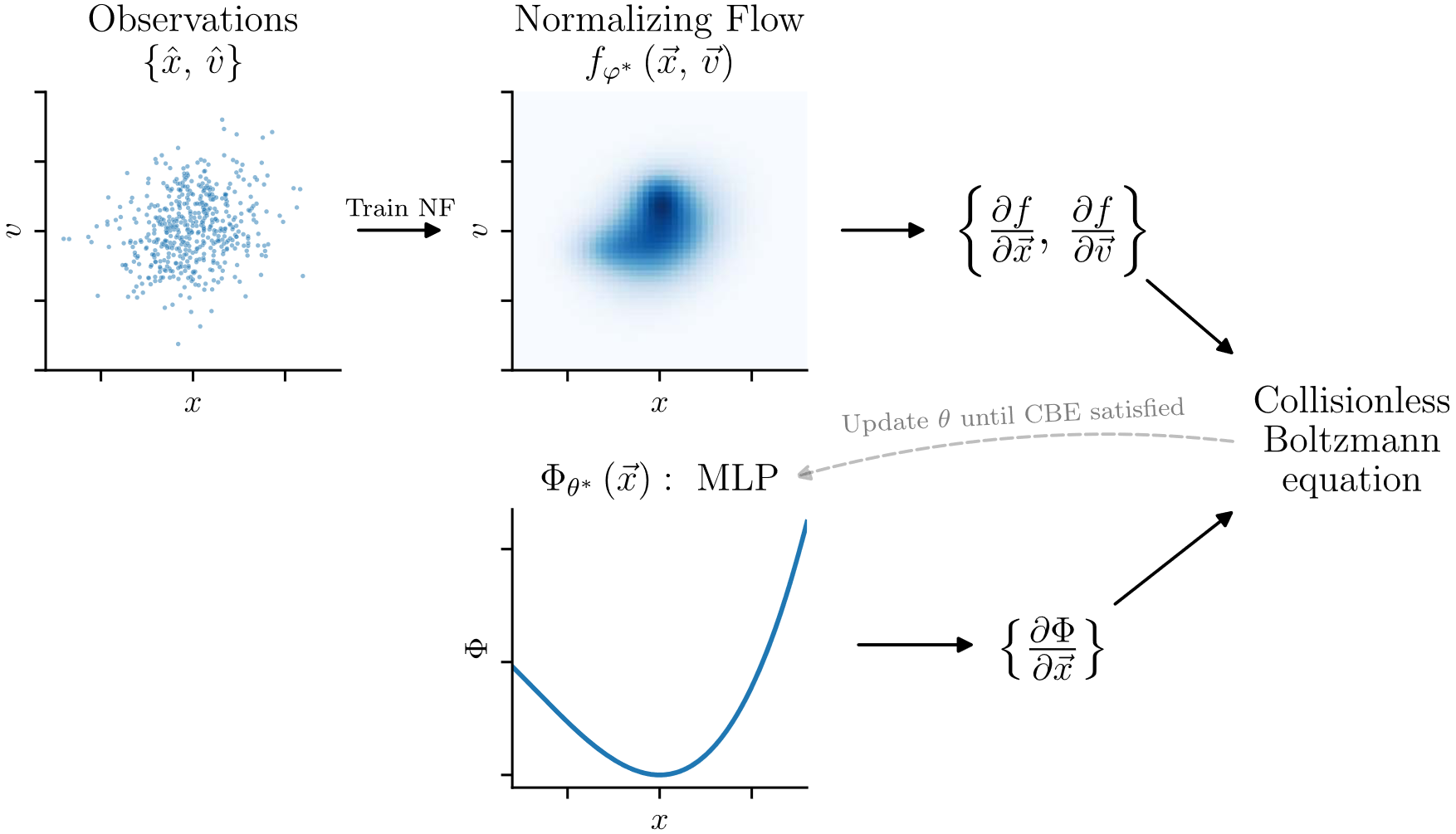
2023
2024
2025
Other Research Interests
Spread of COVID-19
During the pandemic I was part of a research group in Tallinn, studying the spread of COVID-19 and other air-borne viruses as a function of human mobility and social distancing. As part of this, we investigated a simple model for the spread of the pandemic within the constraints of a scale-free network and how well this applied to the real-life spread of COVID-19. The final goal was to build a full scale dynamic model of Estonia for the prediction of COVID-19 spread and the effects of different nationwide policies.
2021
Fractal analysis of Mars and other Solar System bodies
I am interested in using open access data on the topography of different Solar System bodies, especially Mars, and to study the fractality of those surfaces. This is motivated by water leaving strong imprints on Earth’s topography, especially in the fractal dimension of isolines and other scale-free quantities such as the Hurst exponent or Korcak exponent. There is evidence of paleo-oceans on Mars, however special care has to be taken when interpreting the present-day shorelines on Mars, as the surface has been modulated by tectonic plates, volcanic activity, and other natural processes. Neverthless this approach could serve as an interestic diagnostic for the existence of water on Mars.
